Petrouchka
Premiere – 13 June 1911, Ballets Russes de Serge Diaghilev, Théâtre du Châtelet, Paris
Premiere at the State Academic Opera and Ballet Theatre, today the Mariinsky Theatre (production by Leonid Leontiev after the choreography by Michel Fokine) – 20 November 1920
Production premiere by Gary Chryst – 6 February 2010
Running time: 40 minutes
Age category 6+
Credits
Music by Igor Stravinsky
Choreography by Michel Fokine (1911)
Libretto, sets and costumes by Alexandre Benois
Musical Director: Valery Gergiev
Staging by Gary Chryst
Revival Designer: Batozhan Dashitsyrenov
Lighting design: Vladimir LukasevichCoach: Igor Petrov
Petrouchka, staged for Diaghilev’s Saison russe in 1911, marked a triumph for all of its creators. For composer Igor Stravinsky it was his first yet brilliant attempt to come up with his own production, the story of the clownish Petrouchka, told through an orchestral piece where the grand piano plays the lead part. For Alexandre Benois, artist, librettist and St Petersburg antiques enthusiast, it was an opportunity to explore cherished childhood memories of town fairs and circuses. Choreographer Michel Fokine made the most of his reformist ideas of movement as means of expression, the ‘speaking’ choreography. Vaslav Nijinsky, who gracefully brought all these ideas to life in his interpretation of the lead role, was not only a darling with the audiences. The role somehow foreshadowed his own destiny. The ingredients of Petrouchka’s success include a score without mellow tunes, where the main character’s death is marked by the sound of a tambourine dropped to the floor; Petrouchka’s feet turned toes in, so unlike the traditional ballet feet; and the tragedy of loneliness in a flamboyant crowd at the fair. This cocktail of Petrouchka ingredients did not only lead to success in Paris, but also marked a veritable change of ballet epochs.
Les Noces
Premiere: 13 June 1923, Ballets Russes de Serge Diaghilev, Théâtre de la Gaîté-Lyrique, Paris
Premiere at the Mariinsky Theatre: 9 June 2003
Running time 20 minutes
Age category 12+
Credits
Music by Igor Stravinsky
Libretto by Igor Stravinsky based on Russian folk songs from the anthology by folklorist Pyotr Kireyevsky
Choreography by Bronislava Nijinska (1923)
Décor and Costumes: Natalia Goncharova (1923)
Musical Director: Valery Gergiev
Staged: Howard Sayette
Décor reproduced: Boris Kaminsky
Costumes reproduced: Tatiana Noginova
Lighting: Vladimir Lukin
Lighting Adaptation for the Mariinsky II by Yegor Kartashov
Musical Preparation: Oxana Klevtsova
For over ten years Stravinsky was consumed with the idea of Les Noces, a choral work as "a sequence of typical wedding episodes, a reproduction from fragments typical of this ceremony of conversations." The composer sought out the musical form, the orchestral ensemble and the traditional folkloric text, which would represent a genuine Russian rite, and not describe a wedding plot in an à la russe stylisation.Stravinsky's proposed "idea of ritual and impersonal action" found its dazzling embodiment in the choreography of Bronislava Nijinska. It was to her, a classical dancer who had once been a worthy partner and co-conspirator of her brother Vaslav, and who in the post-revolutionary years had dedicated herself to seeking out a new movement, that Diaghilev entrusted the staging of this work that was so precious to him. And, as usual, he had not miscalculated. The Paris premiere of Les Noces in 1923 emerged as a forum, and it revealed to the world a choreographer for whom this production alone would have been enough to ensure entry to the pantheon of great 20th century choreographers.Responding to the nuances of the capricious rhythms and metrics of the music, in Les Noces the movement spoke and lived, needing no pantomime, stage props and realistic costumes. A dance of the ensemble. In the choreographer's mind, each dancer was to blend with the whole through the movement. The Bride and the Groom are mere parts of the combined ensemble, which conveyed the dramatic character of fate and the perpetuity of the protagonists in an old-style peasant wedding: just like in the maiden's braids, which before the wedding are unplaited into two parts and redressed in a woman's hairstyle, the maidens leaned their heads on each other's shoulders, bowing in ritual lamentation, leaned their heads as on an executioner's block. The extreme minimalism in subordination to the dance in the rather cool geometry of the choreographic drawing, in the insistent repetition of the monotonous movements, in the simplicity of the bicoloured brown and white costumes conceived by Natalia Goncharova and in the intentional impassivity of the performers – everything in the ballet was of its time in the context of the avant-garde of the 1920s. And in the sharp, contemporary nature of the ballet the primordial Russian nature of Les Noces was not lost – not cheaply popular and souvenir-like, but conditionally ritualistic, where the plot unfolds as if in a clockwork mechanism: the figures of the dancers intermingle monotonously, literally submitting to the will of one master, the ancient and immutable ritual. Olga Makarova
The Firebird
Premiere: 25 June 1910, Les Saisons Russes, Théâtre de l´Opéra, Paris
Premiere of Michel Fokin’s version at the Mariinsky Theatre: 28 May 1994
Running time: 50 minutes
Age category 6+
Credits
Music by Igor Stravinsky
Libretto by Michel Fokine
Choreography by Michel Fokine (1910)
Reconstruction: Andris Liepa (1994)
Set and costume design: Anna and Anatoly Nezhny after original sketches: Alexander Golovin, Léon Bakst and Michel Fokine
Lighting Designer: Vladimir Lukasevich
Lighting Adaptation for the Mariinsky II by Yegor Kartashov
Igor Stravinsky began his career with The Firebird. It was his first commissioned work, his theatrical debut, followed by a huge success. After the ballet was premiered in Paris, this previously unknown aspiring composer was now ranked among the main newsmakers of the new European art. Stravinsky was invited to write a new score for the Ballets Russes by Diaghilev, since Anatoly Lyadov, composer known for his ability to evoke the world of Russian fairy tales, had failed this order on time. Diaghilev who had a knack for discovering new talents had been impressed by young Stravinsky's Scherzo Fantastique for symphony orchestra, which was “burning and sparkling” as choreographer Michel Fokine put it. It was Fokine who came up with a “glowing image” of the Firebird. By the time Stravinsky became involved with the score, the libretto had already been completed. Fokine had a clear vision of the ballet and guided the composer. Colourful musical themes of the Firebird, the round dance of the Princesses with its Russian femininity, the “Infernal Dance of All Kastchei's Subjects” that turns into a riot of rhythm, it all grew out of discussions between the composer, choreographer and designers, Alexander Golovin and Léon Bakst. In 1910, they created an export Russian fairy tale and it conquered Paris. Yet in Russia, Stravinsky’s The Firebird was performed only in 1921 Fedor Lopukhov's avant-garde production. Fokine's version of The Firebird, for which Stravinsky created his score, became a part of the Mariinsky Theatre’s repertoire only in the late 20th century. Olga Makarova
Le Sacre du printemps
Credits
Musiс by Igor Stravinsky (1913)
Scene plan: Igor Stravinsky and Nicholas Roerich
Choreography by Millicent Hodson (1987) inspired by Vaslav Nijinsky (1913)
Décor and costumes after Nicholas Roerich (1913)
Revival of the sets and costumes and supervision – Kenneth Archer
(Revived sets and costumes © 1987 Kenneth Archer)
Set Revival Designer – Boris Kaminsky
Costume Revival Technologist – Tatiana Noginova
Lighting Designer – Sergei Lukin
World premiere of the ballet choreography by Vaslav Nijinsky: 29 May 1913, Les Ballets Russes de Serge de Diaghilev, Théâtre des Champs-Elysées, Paris
Premiere at the Mariinsky Theatre: 9 June 2003
Premiere of the revival: 13 July 2012
Running time 40 minutes
”I came up with the idea for Le Sacre du printemps while I was still composing The Firebird. I pictured a scene of some pagan rite in which a girl who was to be the sacrifice dances herself to death. But this vision came with no specific musical idea at all <…>. I told Diaghilev of Le Sacre du printemps even before he came to see me in Lausanne in late 1910 <…>. In July 1911, after the premiere of Pétrouchka, I travelled to the estate of Princess Tenisheva near Smolensk in order to meet Nicholas Roerich there and compile a stage plan for Le Sacre du printemps. I began to work with Roerich and in a few days’ time the plan of the action onstage and the names of the dances had been worked out. Roerich also made sketches of his famous backdrops, Polovtsian in spirit, as well as sketches for the costumes based on actual examples in the collection of Princess Tenisheva. Apropos, our ballet was called Sacred Spring in Russian. Le Sacre du printemps which Bakst came up with is only suitable for French. In English, the title The Coronation of Spring was closer to my original idea than The Rite of Spring.
<…> I made haste to complete Le Sacre as I wanted Diaghilev to stage it in the 1912 season. <…> The fact that the premiere of Le Sacre du printemps was surrounded by scandal is a fact probably known by everyone now. Although, however strange it may seem, I myself was totally unprepared for such an explosion of passions. The reaction of the musicians to orchestral rehearsals had not foretold this, while the plot unfolding on the stage didn’t really seem to justify causing such a riot. The ballet dancers had rehearsed for months and knew what they were doing, although what they were doing often had nothing in common with the music. “I will count to forty; in the meantime you can play,” Nijinsky said to me, “and we’ll see where we become separated.” He couldn’t understand that if, indeed, we became separated in one particular instance it didn’t mean that the rest of the time we had been together. The dancers chose to follow the counts that Nijinsky beat out rather than the musical tempo. Nijinsky, of course, counted in Russian, and in as much as in Russian numbers after ten are made up of numerous syllables – vosemnadtsat (eighteen), for example – at a fast tempo neither he nor the dancers could follow the music.
After 1913 I saw only one stage production of Le Sacre du printemps – that was Diaghilev’s revival in 1920. Then the accord between the music and the dance was better than in 1913, but Massine’s choreography was too gymnastic and in the style of Dalcroze for meto like it.
It was then that I understood that I preferred Le Sacre du printemps to be performed in concert. Twice I reworked a few sections from Le Sacre du printemps – in 1921 for Diaghilev’s production and then in 1943 (only The Great Sacrificial Dance) for a performance (which never took place) by the Boston Symphony Orchestra. <…> But I could rework my own music endlessly <…>. When composing Le Sacre du printemps I was led by no specific system. <…> It was only my sense of sound that helped me. I heard and wrote down only what I heard. I was the vessel through which Le Sacre du printemps passed.”
Igor Stravinsky. Dialogues



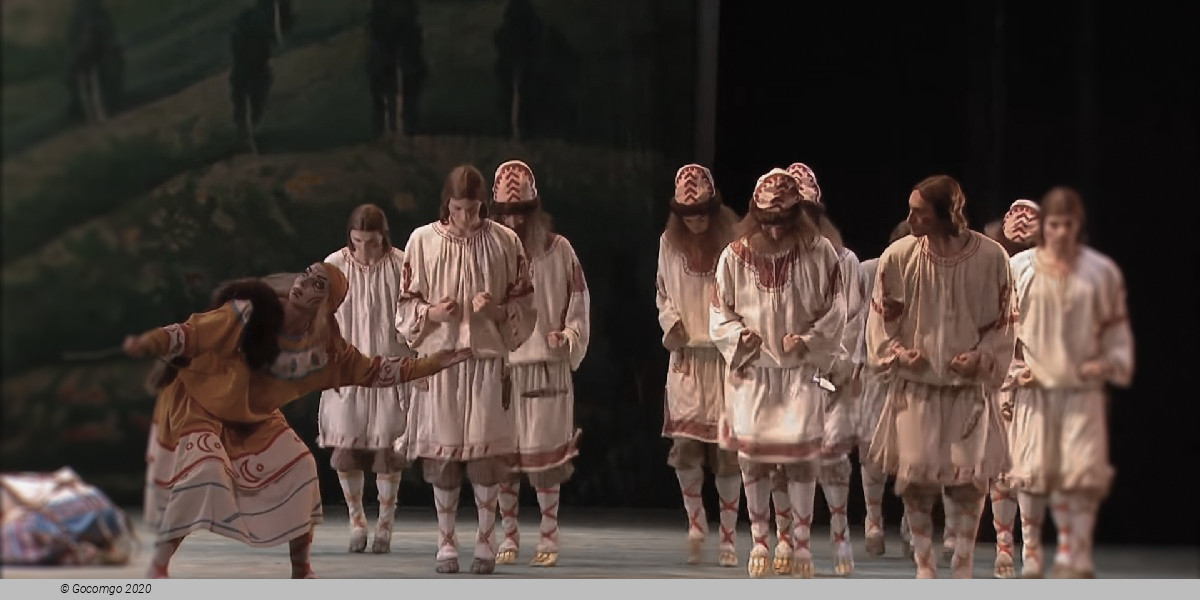
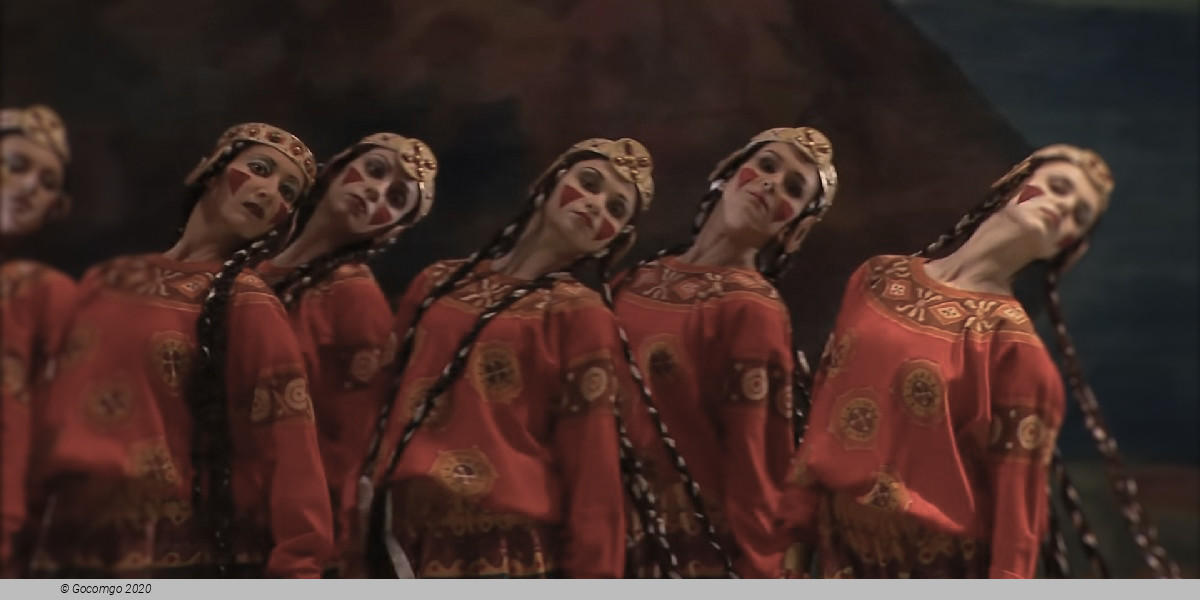
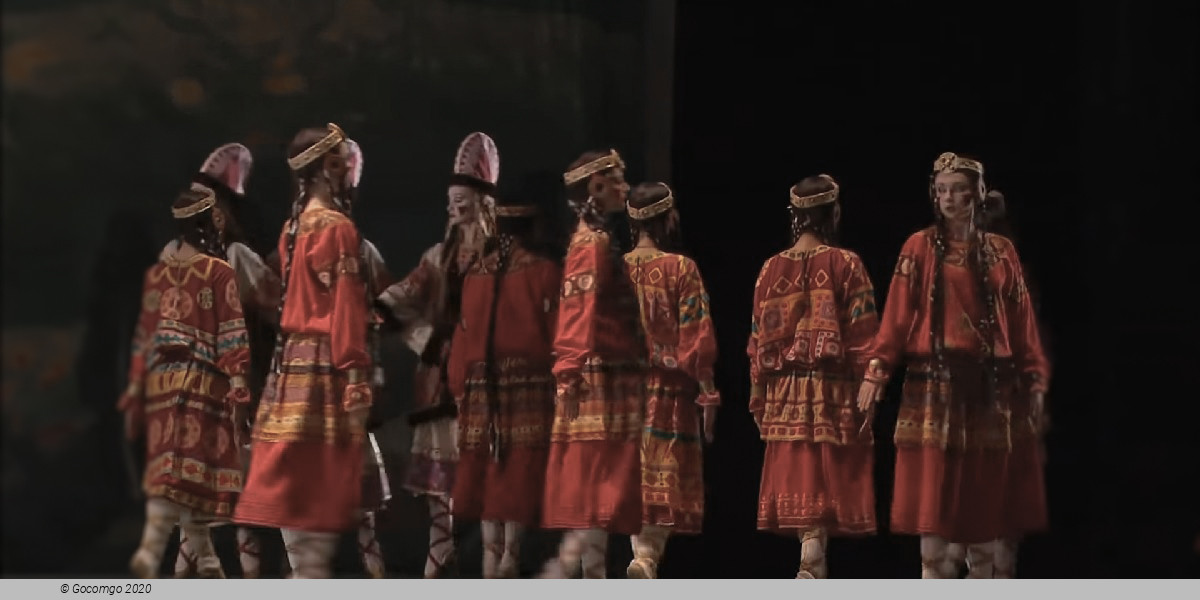

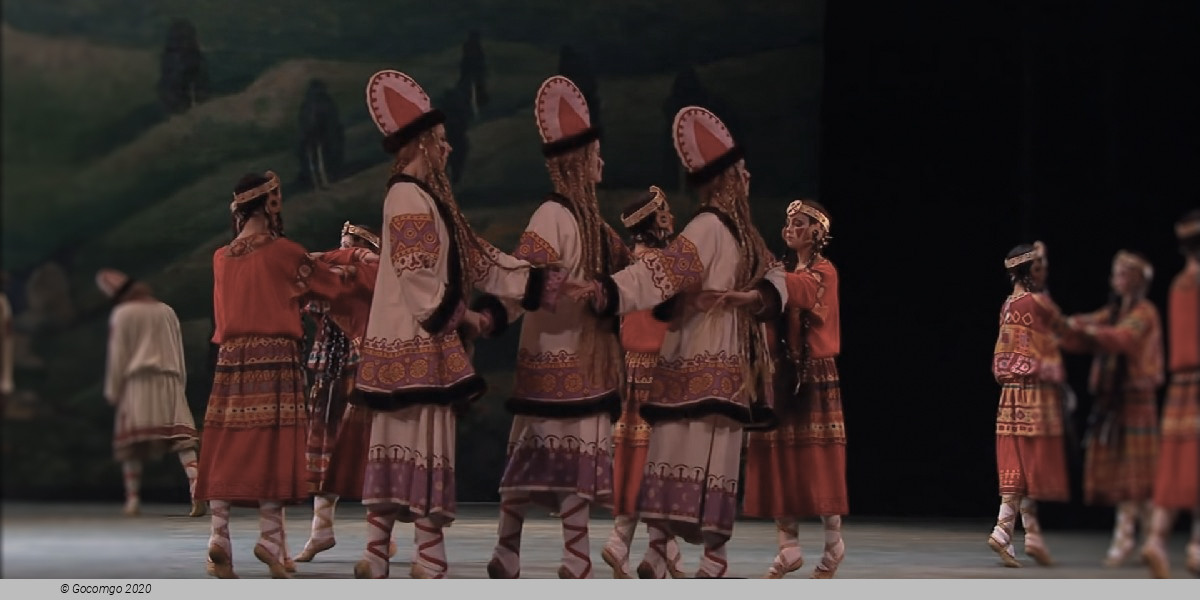
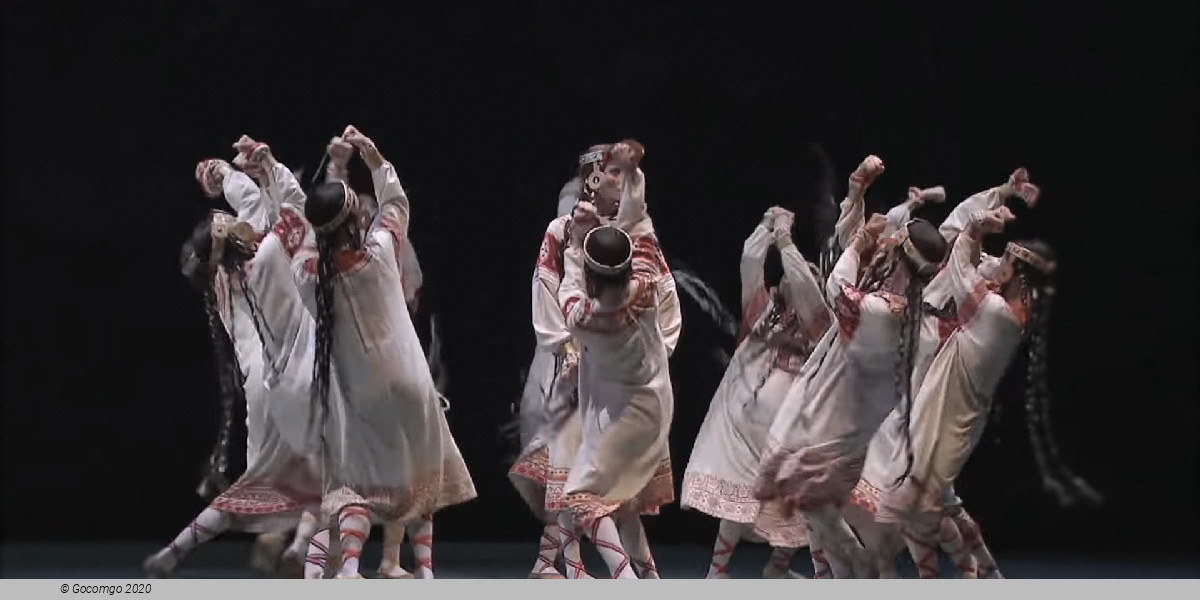
 Teatralnaya Square 1
Teatralnaya Square 1